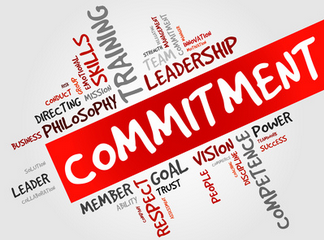Take A Stand
At Choice Awareness Management, we help you create beliefs and related language and show you how to make and keep commitments: we call this taking a stand.
You may ask why this might be important to you as an individual and a company?
Taking a stand about your beliefs is character building because it has you making and keeping commitments about your beliefs, choices, actions, and the results you get.
Character building is a corner-stone of creating beliefs for yourself. We invite you to take a free survey to learn about your character strengths - see VIA Institute on Character.
Commitment for us means taking a stand for something in which you believe…
(Wisdom Sidebar) With our Beliefs and Choices Methodology (BCM), you get to make clear definitions of the things you really want to occur in your life and business. They manifest in your explanations of your beliefs, choices, actions, and results by your clear articulation of them.
You get to understand with high clarity and awareness what happens during the implementation and execution of your designed beliefs: you get to experience the lifting of language and behaviors. By the way, you can monitor and manage what works and what doesn't.
With your close inspection and active participation of your own beliefs and choices methodology, you live in the moments of your stands and experiences and the reality of what you have designed.
The Language that Character Builds
Many companies today define core principles and values, yet these usually lack a destination. For instance, a company may stand for quality but do little in defining what quality means for them. Quality could mean delivering perfection in the custom design and manufacture of a product. It could mean providing a service that produces the client outcome in a specified time-frame. It could have all kinds of meanings. Without a clear definition, it is a turkey shoot (e.g., hit and miss).
Tangible Beliefs
A better way to illustrate this gap in understanding between core principles and values is to define concrete beliefs, all of which have a designed outcome/result, which is measurable. For instance, let's assume you wish to have quality as a principal tenet of your company. Define excellence with a designed outcome of producing error-free products or services, such that the result of creating excellence is measured from 9.5 to 10.0 on the CAM Awareness Scale.
Examples of Belief Systems
For those of you that know the 6 Sigma process (i.e., six errors per million parts), you can appreciate how difficult it is to produce excellence. Moving from a 9.5 to 9.6 can be challenging at best. Without defining practices inside your company, you will never attain excellence. There are other ways to reach excellence (i.e., see the Nextflix Culture - BTW, we consider the Netflix Way all articulated beliefs). Your defined beliefs represent your company's language - it will reduce ambiguity and enroll people into what you wish to accomplish. By defining beliefs, you are part of the way toward building processes.
The concept of implementing beliefs and enrolling people in the ideas will perpetuate your on-purpose living and business experiences. OK, so you may ask what kinds of beliefs would accomplish that for you?
Defining Virtuous Behaviors
Design beliefs around the kinds of behaviors that you want to show up in your life and business. We call these virtuous behaviors worthy of daily activity and attention. As an example, imagine your business is an engineering firm that designs medical products that help sustain life (e.g., pace-makers, insulin injectors, etc.).
One of the top behaviors you wish to have shown up in all activities is attention-to-detail with an outcome of designing the product to FDA and client requirements. All measurable too. Perhaps also, you wish integrity as one of your behaviors measurable by matching actions to language (e.g., promises fulfilled). Besides, you have defined a can-do-attitude where the outcome is persevering in the face of challenges/problems and having them solved to an effective end.
OK, are you getting the idea of how one could do this. Yes? No? Maybe?
But, let's take the example a step further. We want to ensure that people understand what these beliefs mean, how important they are to success, and the benefits of performing the behaviors. Since many firms today are measurement conscious, these beliefs will track well inside the performance-based environment and lift language, behaviors, performance, and enrollment. How?
Integrity a Virtuous Belief
You must over-articulate the beliefs so that they become second nature to everyone. You can accomplish this by creating visual displays placed strategically throughout your business so that you can point to these visual displays as training devices whenever an issue arises. Look at the example of a visual display of integrity close by.
This image depicts commitment, which for us means taking a stand…
We suggest having a stand-up 10-minute meeting at the end of the day to review one specific error(s) that arose during the day.
Point to integrity and ask some of these questions: 1) How did this belief show up in your work today?; 2) What led you to believe it would help exercise this behavior?; 3) What was the solution and the result in you using this behavior?; 4) How has this behavior led to performance - Low, medium, or high?
When you implement these ideas inside your life and business, you will lift your language. By the usage becoming more precise, your behaviors will improve, and your confidence levels and contribution will increase. BTW, we have the data to prove this works.
We invite you to look around our website to explore more of our ideas and see how our services and products will fit your needs.



